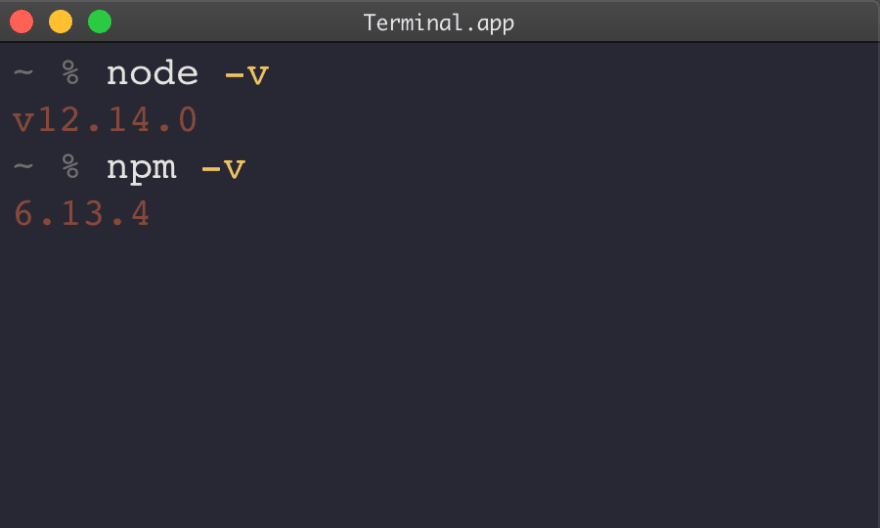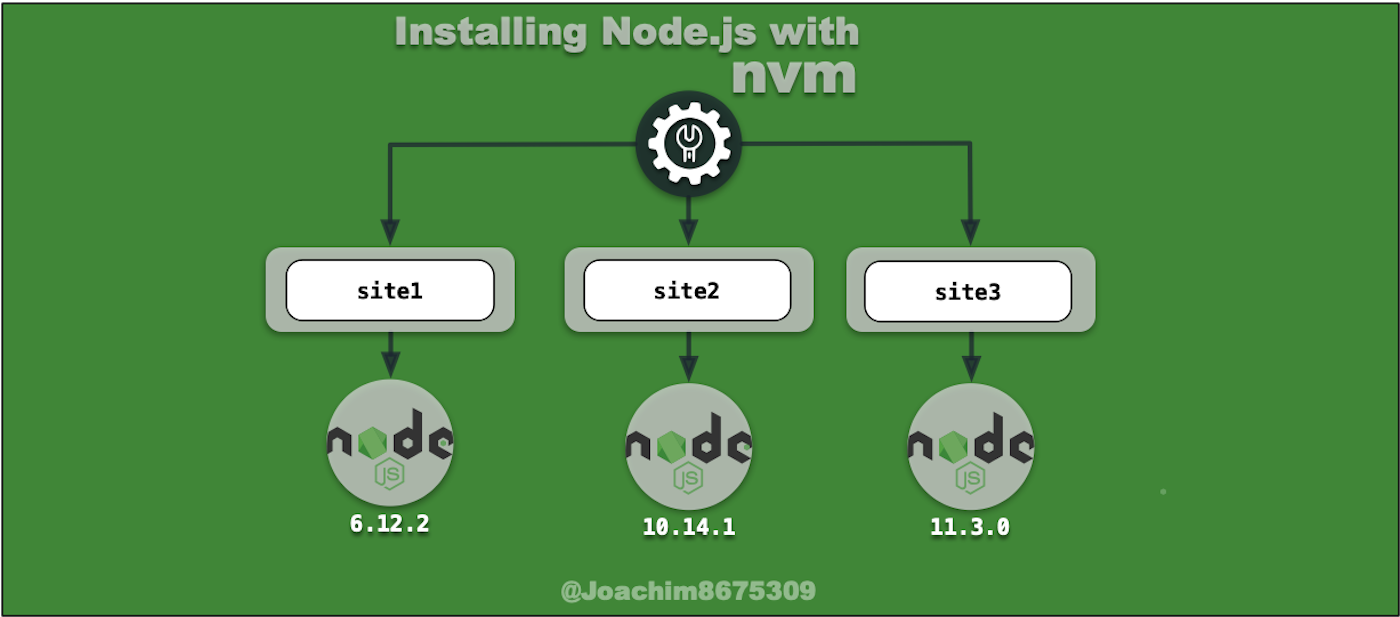
- NVM INSTALL NODE V11.4.0 HOW TO
- NVM INSTALL NODE V11.4.0 FOR MAC
- NVM INSTALL NODE V11.4.0 INSTALL
- NVM INSTALL NODE V11.4.0 UPDATE
- NVM INSTALL NODE V11.4.0 FULL
NVM INSTALL NODE V11.4.0 HOW TO
Go to How to add User into Sudoers on Ubuntu 18.04 article to check how to provide sudo access to user. In this tutorial, I am logged in as test user which has sudo access.
NVM INSTALL NODE V11.4.0 INSTALL
It is mostly required to test your code and libraries for backward compatibility.īefore you go through the steps to install nvm for node.js in your system, it is very important to fulfill prerequisites criteria first.Īlso Read: An Introduction to Javascript Step 1: PrerequisitesĪ)You need to have a running Ubuntu 18.04 System.ī)You must logged in as root or any other user having sudo access to run all commands. It is used to install and manage various different versions of Node.js in a System. This tool allows him to switch his node version back and forth with the use of a simple command. This tool makes developers life little easy by providing the features of using and managing different node versions for multiple projects in a single system. Node Version Manager(NVM) is the most widely used tool for node.js version management. See the ().In this tutorial, I will take you through the steps to install NVM for Node.js on Ubuntu 18.04. We use asdf in buildkite to lock the versions of the tools that we use on a per-commit basis. It can be likened to a language-agnostic version of () or ().

() is a CLI tool that manages runtime versions for a number of different languages and tools. If you have issues running Docker, try, and/or, or try running these commands under `sudo`. You need to have Redis running when you start the dev server later on. # $REDIS_DATA_DIR should be an absolute path to a folder where you intend to store Redis data In this case you should not enable the `rvice` from the previous step.ĭockerd # if docker isn't already runningĭocker run -p 6379:6379 -v $REDIS_DATA_DIR redis (optional) You can also run Redis using Docker

# in repo dir: install current recommendend version of Node JS Sudo chmod 2777 /usr/local/var/run/watchman It might need to be adjusted depending on your Homebrew prefix (`/usr/local` below) and shell (bash below). Alternatively, you can use the command below. Homebrew gives you the command to run to insert `psql` in your path in the "Caveats" section of `brew info postgresql`. Homebrew does not put it there by default. Ensure `psql`, the PostgreSQL command line client, is on your `$PATH`. (You can stop them later by calling `stop` instead of `start` above.)ħ. Configure PostgreSQL and Redis to start automatically Instead, to ensure you get a Node version compatible with the current stateĦ.

Note: Although there is a Homebrew package for Node, we advise using `nvm` `.nvmrc` at the root of the sourcegraph repository. Install the current recommended version of Node JS by running the followingįrom the working directory of a sourcegraph repository clone:Īfter doing this, `node -v` should show the same version mentioned in There is also a Homebrew package for `nvm`, but it is unsupported by theĥ. Use `type nvm` to verify whether it is set up. Note: `nvm` is implemented as a shell function, so it may not show up in
NVM INSTALL NODE V11.4.0 UPDATE
Re-running the install script will update the installation. `source ~/.zshrc`) or restart your terminal session to pick up the `nvm`ĭefinitions. Install the Node Version Manager (`nvm`) using:Ĭurl -L "$NVM_VERSION"/install.sh -o install-nvm.shĪfter the install script is finished, re-source your shell profile (e.g., Install Go, Node Version Manager, PostgreSQL, Redis, Git, NGINX, golang-migrate, Comby, SQLite tools, and jq with the following command:īrew install go yarn redis postgresql git gnu-sed nginx golang-migrate comby sqlite pcre FiloSottile/musl-cross/musl-cross jq watchmanĤ. The following are two recommendations for installing these dependencies:ģ.
NVM INSTALL NODE V11.4.0 FOR MAC
For macOS we recommend using Docker for Mac instead of `docker-machine` () (see current recommended version in ()) Sourcegraph has the following dependencies: > NOTE: Please see install instructions for (#macos) and (#ubuntu) in succeeding sections. You'll need to clone () (which has convenient preconfigured settings and external services on an enterprise account) alongside the `sourcegraph/sourcegraph` repository, for example:Īfter the initial setup you can run `enterprise/dev/start.sh` instead of `dev/start.sh`. The sections below describe the dependencies you need to run `dev/start.sh`.
NVM INSTALL NODE V11.4.0 FULL
See the (architecture/index.md) for a full description of what each of these services does. The development server, (), initializes the environment and starts a process manager that runs all of the binaries.

Sourcegraph server is a collection of smaller binaries. (#increase-maximum-available-file-descriptors) (#problems-with-nodemodules-or-javascript-packages) (#step-5-configure-https-reverse-proxy) # Getting started with developing Sourcegraph


 0 kommentar(er)
0 kommentar(er)
